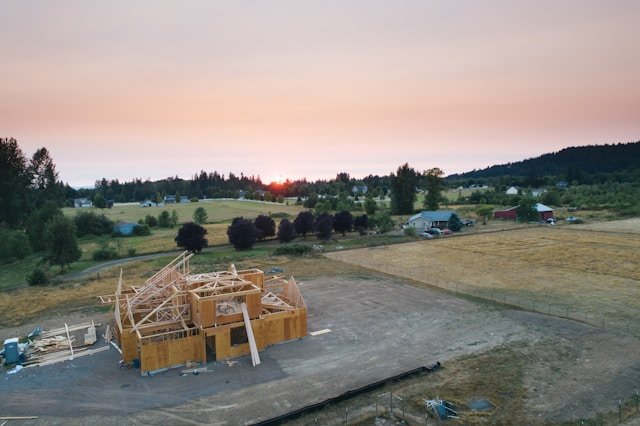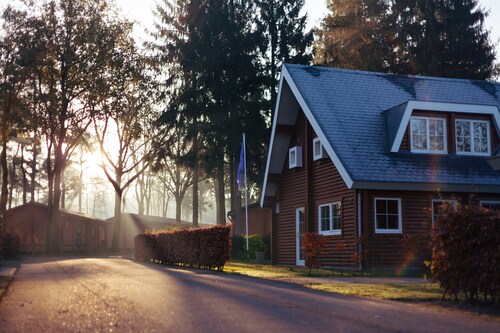In agricultural building design, trends and innovations are reshaping the landscape, providing farmers with efficient and sustainable solutions for their operations. Several reputable companies are at the forefront of this revolution, offering steel prefab structures that cater to the evolving needs of modern agriculture. From incorporating intelligent farming technologies to embracing sustainable practices, agricultural buildings are transforming significantly to enhance productivity, efficiency, and environmental stewardship. This comprehensive exploration will delve into the latest trends and innovations in agricultural building design, highlighting the benefits of using steel prefab buildings to meet the diverse needs of farmers and growers.
Incorporating Smart Farming Technologies
Integrating innovative farming technologies is revolutionizing agricultural practices, and this trend extends to the design of farm buildings. Steel prefab structures offer an ideal platform for incorporating these technologies, providing farmers with enhanced control and monitoring capabilities. From automated irrigation systems to precision agriculture tools, intelligent farming technologies enable farmers to optimize resource usage, maximize yields, and minimize environmental impact. Steel prefab buildings can seamlessly accommodate sensors, cameras, and other IoT devices, creating a connected ecosystem that empowers farmers to make data-driven decisions and improve overall farm efficiency.
Moreover, integrating smart farming technologies into steel prefab buildings goes beyond mere convenience; it fundamentally transforms how farmers interact with their operations. Real-time data collection and analysis allow farmers to monitor crop health, soil moisture levels, and environmental conditions with unprecedented accuracy and precision. This actionable intelligence enables proactive decision-making, such as adjusting irrigation schedules based on weather forecasts or implementing targeted pest management strategies.
Sustainable Practices in Agricultural Construction
Sustainability is a core focus in modern agricultural construction, driven by the need to minimize environmental footprint and conserve resources. Steel prefab buildings align perfectly with sustainable practices, offering several advantages over conventional construction methods. Prefabrication reduces material waste and construction time, while steel’s recyclability makes it an eco-friendly choice for building materials. Steel prefab structures can also be designed to incorporate energy-efficient features such as natural lighting, insulation, and renewable energy systems, further reducing operational costs and environmental impact. By embracing sustainable practices in agricultural construction, farmers can create efficient, resilient, and environmentally responsible facilities that support long-term sustainability goals.
Adapting Buildings for Diverse Agricultural Needs
Agricultural operations are diverse, requiring buildings that can adapt to various farming practices and production methods. Steel prefab buildings offer unparalleled flexibility and scalability, making them well-suited for multiple agricultural applications. Whether it’s housing livestock, storing equipment, or processing crops, prefab steel structures can be customized to meet specific requirements efficiently. Moreover, modular construction allows for easy expansion or reconfiguration as farming needs evolve. This adaptability ensures that agricultural buildings remain functional and relevant, enabling farmers to maximize productivity and optimize their operations effectively.
Enhancing Operational Efficiency and Productivity
The primary goal of farm building design is to enhance operational efficiency and productivity on the farm. Steel prefab buildings contribute significantly to this objective by providing durable, low-maintenance structures that support seamless workflow and organization. With ample space, clear-span designs, and customizable layouts, prefab steel buildings optimize space utilization and workflow efficiency, reducing bottlenecks and streamlining operations. Additionally, features like insulated panels, ventilation systems, and climate control options create comfortable environments for livestock and workers, further enhancing productivity and well-being on the farm.
Conclusion
In conclusion, the trends and innovations in agricultural building design are transforming how farmers approach construction and facility management. By incorporating innovative farming technologies, embracing sustainable practices, and adapting buildings to diverse agricultural needs, steel prefab buildings enable farmers to optimize their operations, maximize productivity, and minimize environmental impact. As agriculture continues to evolve, the benefits of using steel prefab buildings become increasingly evident, providing farmers with the tools they need to thrive in a rapidly changing industry.




